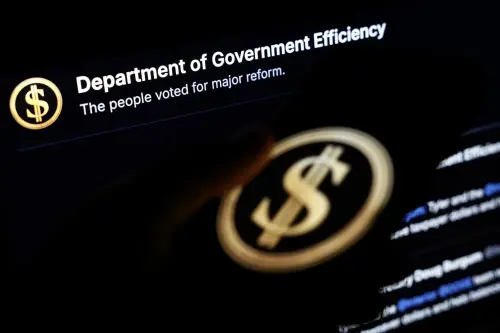President Obama’s pledge to cap domestic non-defense spending in the FY 2011 budget did not mandate an across-the-board freeze, and nowhere is that fact more welcome than in the area of innovation investments. In lean times the new budget strongly favors basic science and applied research. Because it does, the budget represents an important step toward delivering on Obama’s signal commitment last spring to boost U.S. public and private R&D to 3 percent of gross domestic product and so recoup the sort of investment that made America the original innovation nation.
To be sure, the budget’s top-line R&D numbers do not inspire. Overall, the 2011 request provides for only a scant 0.2 percent increase in R&D efforts over FY 2010. However, because the new outline trims defense-related research, the document manages to propose a major 6.4 percent increase in civilian R&D that would boost that activity by another $3.7 billion to reach $61.6 billion. Thanks to that boost, the 2011 request at once expands support for R&D in the short run but also continues the Obama administration’s promise to double the funding for the nation’s three most crucial basic research agencies: the National Science Foundation (NSF); the Commerce Department’s National Institutes of Standards and Technology (NIST); and the Department of Energy’s Office of Science.
Along these lines, all three key agencies will see important gains.
An 8 percent increase in the requested NSF budget will maintain its doubling trajectory and expand the foundation’s support of basic science and the training of scientists.
At NIST, a 7.3 percent increase over 2010 appropriation reflects Commerce Secretary Gary Locke’s commitment to fostering innovation to both create jobs and enhance the long-term competitiveness of the U.S. economy. To that end, the budget proposes significant growth for NIST’s well-regarded programs for fostering technology adoption, manufacturing advances, applied research, and the Hollings Manufacturing Extension Partnership for diffusing best practices.
And perhaps most notably, the Department of Energy’s Office of Science is slated for a 4.6 percent budget bump that would invest some $5.1 billion in FY 2011 in increased support for the advanced and applied clean energy research and technology deployment that will be essential to invent the next economy, create jobs, and increase American energy independence. Embedded here or related to the Office of Science are a series of noteworthy proposals arrayed all across the troubled energy innovation pathway. Along this continuum the budget calls for:
- $140 million for more Energy Frontier Research Centers linking together small groups of researchers to clear scientific roadblocks that prevent energy breakthroughs.
- $300 million for the newly created Advanced Research Projects Agency-Energy (ARPA-e), modeled on the fabled Defense Advanced-Research Projects Agency (DARPA) to support high-risk research in search of transformational discoveries. This moves closer to direct assaults on possible breakthroughs.
- $141 million for Energy Innovation Hubs aimed squarely at the development and deployment of promising energy-related technologies. Here, the budget proposes the creation of a new fourth hub ($34 million) to focus on batteries and energy storage to complement last year’s start-up suite of three other themed hubs. Somewhat as proposed by a Brookings paper, each of the hubs will bring together a multidisciplinary team of researchers in an effort to speed research and shorten the path from scientific discovery to technological development and commercial development.
Beyond these breakthrough-aimed, applied-science-leaning initiatives, meanwhile, the budget includes solid new investments in energy efficiency and renewable energy programs, which will grow by an aggregate 5 percent and $113 million over the next year if Congress sees fit. Across these programs, solar energy investment is recommended to grow by 22 percent; wind spending by 53 percent; geothermal by 25 percent; vehicle and building technology programs by 5 and 4 percent.
As to how all this will be paid for, the new budget suggests: the old-fashioned way—through the regular appropriations process. Last year, the president’s budget plan provoked the ire of congressional appropriators by assuming that at least $646 billion in revenue would be available to support growing domestic spending, thanks to the projected sale of pollution allowances from a proposed cap-and-trade system to reduce U.S. carbon emissions. This week, no such assumption was advanced, given the very uncertain status of comprehensive climate legislation on Capitol Hill. Perhaps that reasonable call will reduce tensions and encourage lawmakers in Congress to support a well thought-out suite of foundational investments that will help a troubled nation regain its leadership among the world’s most innovative nations.
The Brookings Institution is committed to quality, independence, and impact.
We are supported by a diverse array of funders. In line with our values and policies, each Brookings publication represents the sole views of its author(s).





Commentary
Budget 2011: Driving Innovation Despite the Budget Cap
February 4, 2010